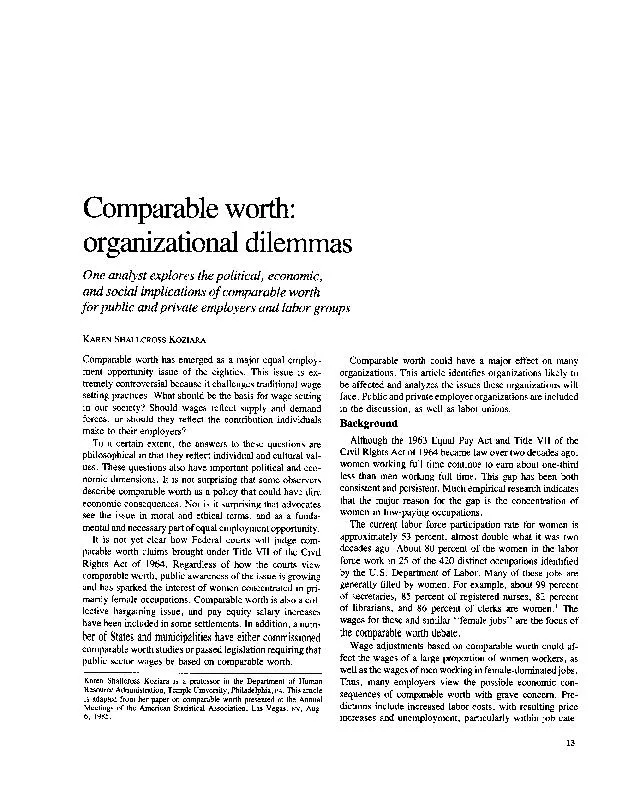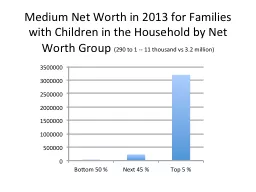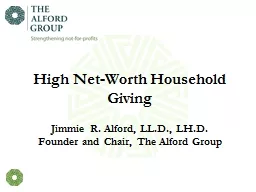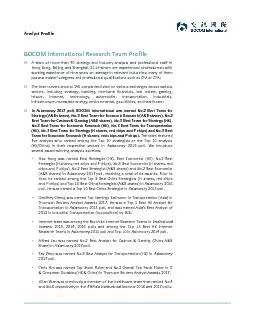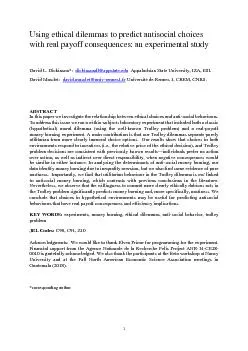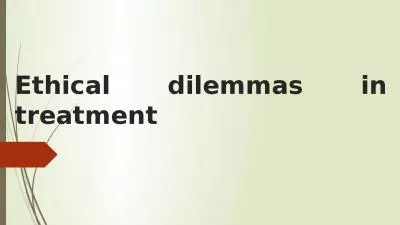PDF-Comparable worth: organizational dilemmas One analyst explores the pol
Author : faustina-dinatale | Published Date : 2016-05-06
MONTHLY LABOR REVIEW December 1985 e Comparable Worth Organizational Dilemmas gories allocated comparable worth increases In contrast advocates of comparable worth
Presentation Embed Code
Download Presentation
Download Presentation The PPT/PDF document "Comparable worth: organizational dilemma..." is the property of its rightful owner. Permission is granted to download and print the materials on this website for personal, non-commercial use only, and to display it on your personal computer provided you do not modify the materials and that you retain all copyright notices contained in the materials. By downloading content from our website, you accept the terms of this agreement.
Comparable worth: organizational dilemmas One analyst explores the pol: Transcript
Download Rules Of Document
"Comparable worth: organizational dilemmas One analyst explores the pol"The content belongs to its owner. You may download and print it for personal use, without modification, and keep all copyright notices. By downloading, you agree to these terms.
Related Documents

